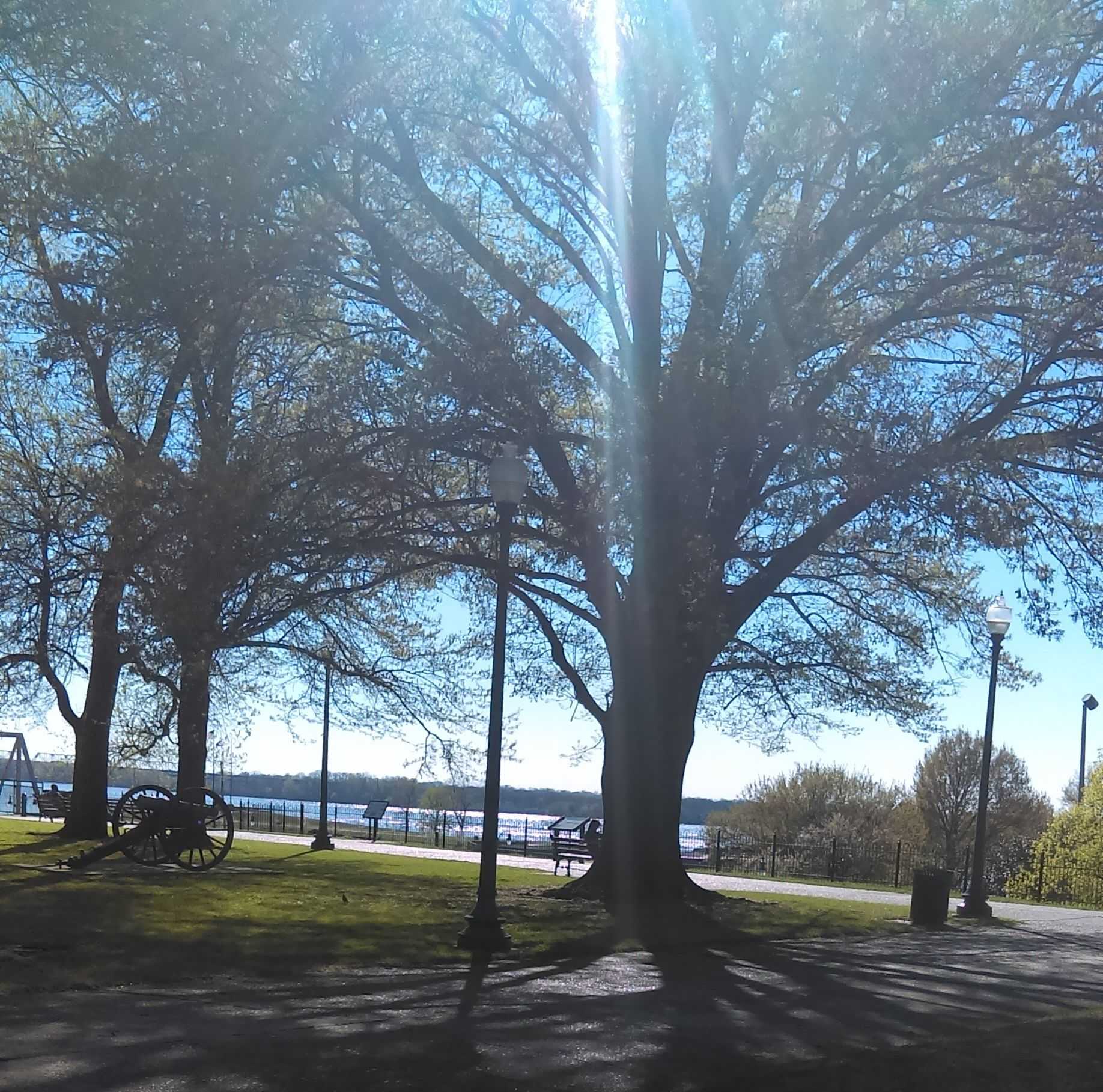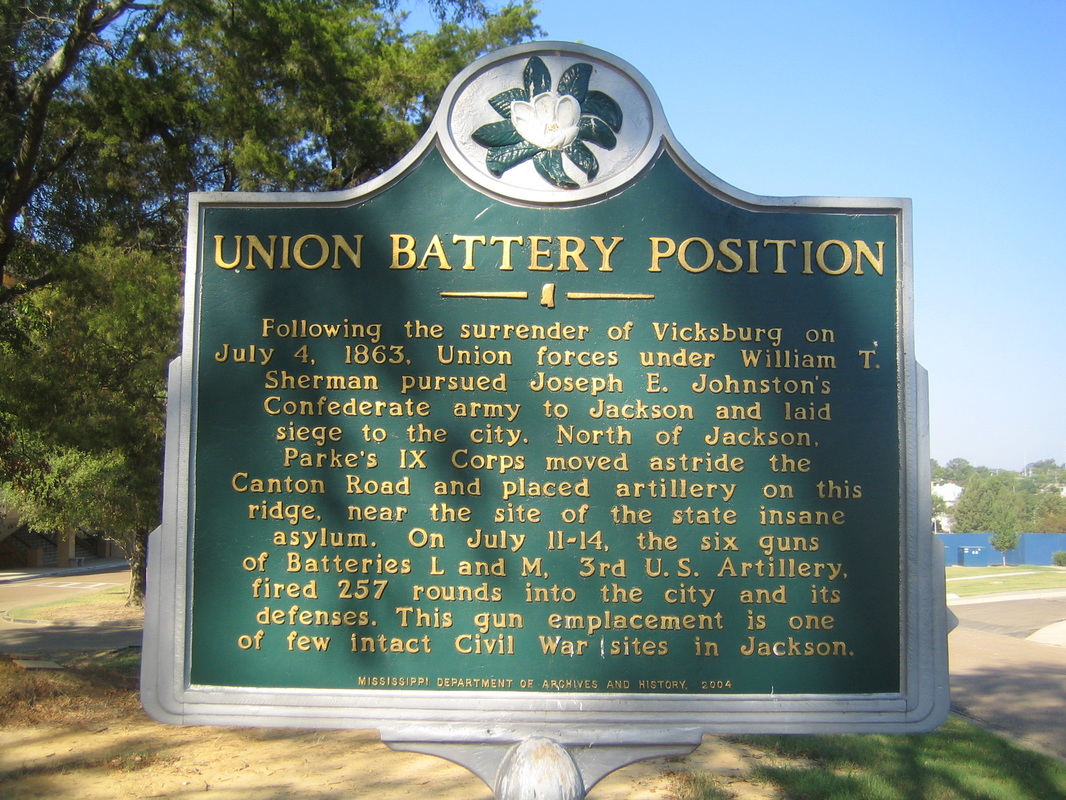 Anson
Croman
Anson
Croman
Company F, 20th Michigan Volunteer Infantry Regiment
American Civil War
June 10 to July 16, 1863 Vicksburg Campaign Sites Today
The 20th Michigan as Liberators
As a direct result of the Vicksburg Campaign thousands of slaves from Mississippi, Louisiana, and Arkansas fled to Union occupied Vicksburg and their freedom.
At state and county sites in Tennessee and Mississippi the historical fact that slaves were liberated during the Vicksburg and other campaigns is omitted.
By the summer of 1863, the Civil War had become not just a war to reunite the nation but a war to liberate enslaved people.
That historical fact was prominently included at National Civil Rights Museum in Memphis and the Vicksburg National Military Park.
The Vicksburg National Military Park reports that after the liberation of Vicksburg, up to 30,000 enslaved African-Americans fled to Vicksburg for their freedom.
From those freed slaves the Union recruited and organized 5,000 African-American men into army units to occupy and police Vicksburg.
Because of that units such as the 20th Michigan as may be viewed as liberators as are our WWII troops who liberated slave laborers from the Nazis and Japanese in WWII.
| Michigan Memorial at the Vicksburg |
| Click
on image for larger format Anson Croman's 2nd
great-granddaughter Cheryl A. Robinson at the
Michigan Memorial at the Vicksburg
Photo by Leonard H. Cizewski. Anson Croman's 2nd great-grandson-in-law |
En Route to Vicksburg, Mississippi: June 10 - 16, 1863
| Memphis,
Tennessee 2016 and June 10 - 12 1863 |
Click
on image for larger format On June 10, 1863, Anson Croman and the 20th Michigan arrived at Memphis, Tennessee from Cairo, Illinois. On June 11, they disembarked on the Arkansas shore to rest and bath (RIGHT). On June 12, the 20th resumed its journey south to Vicksburg. This photo of the Arkansas shore of the Mississippi where the 20th Michigan landed was taken from the former Confederate Park now called Memphis Park from behind the statue of Jefferson Davis. I chose this location to highlight how Confederate memorials remain prominent and the liberation of Memphis by the Union Navy and Army followed by the liberation of the enslaved African-American in and around Memphis is not recognized in an equal way. Photo by Leonard H. Cizewski, 2016 |
Click for larger format The Arkansas shore of the Mississippi River across from Memphis. Photo by Leonard H. Cizewski, 2016 |
| June 14, 1863: Warrenton, Mississippi. |
Click for larger
format On June 14, 1863, the 20th landed at Young's Point, Louisiana and marched south to a point opposite Warrenton, Mississippi south of Vicksburg. On June 15, the 20th was ordered to march back to Young's Point. On June 16 they embarked on steamboats. Photo by Leonard H. Cizewski, 2016. |
| Click
for larger format South of Vicksburg at the site of a Confederate battery north of Warrenton looking towards the Louisiana side of the Mississippi. Photo by Leonard H. Cizewski, March 30, 2016 |
| June 16, 1863:Snyder's Bluff. |
| Click for larger
format On June 16, the 20th Michigan sailed back up (north) the Mississippi River to the Yazoo River to Snyder's Bluff where they disembarked. March 30, 2016 Photo by Cheryl A. Robinson. |
Army of Maneuver June 17- July 4, 1863
| Army of Maneuver Area of Operations Click for larger format  BLUE LINE WITHIN ORANGE CIRCLE Anson Croman and the 20th Michigan constructed earthworks and served on garrison duty from June 17 until the July 4, 1863 protecting the Siege Army surrounding VIcksburg. Map from Vicksburg Campaign Driving Tour Guide (Fair Use) |
| 9th Corps Headquarter Marker Click for larger format |
| First Position: Parson Fox's Plantation |
| Click for larger
format After disembarking at Snyder's Bluff, the 20th Michigan deployed to the southeast.where they constructed and manned fortified lines from June 17 until June 28, 1863. Photo by Leonard H. Cizewski, 2016 |
| Marker
inside the Vicksburg National Military Park
commemorating the 9th Corps Headquarters near
Milldale near Parson Fox's Plantation, The 20th Michigan was in the 9th Corps. Photo by Cheryl A Robinson, March 30, 2016 |
| Second and Final Position |
| Click
for larger format |
| Area near the end of the where
the 20th Michigan served in the Army of Manuver from June
29 until the July 4 To protect the troops besieging Vicksburg, the Army of Manuver constructed a fortified line. Also near where the 20th Michigan started its march to Jackson after the July 4 surrender of Vicksburg. Photo by Leonard H. Cizewski, 2016 |
| Earthworks |
| Click for larger format Almost none of the earthworks that the Army of Maneuver constructed have survived. This is trench in the Vicksburg National Military Park that would be similar to the types of fortifications Anson Croman and the 20th Michigan would have constructed northeast of Vicksburg. Photo by Cheryl A. Robinson 2016 |
July 4 - 16, 1863 Campaign After the Surrender of Vicksburg
| Birdsong Ferry on the Big Black River Click for larger format After the surrender of Vicksburg on July 4, 1863, the 20th began to march towards Jackson, Mississippi. On July 5, reconnaissance reported that the Confederates were holding Birdsong Ferry. On July 6, other units constructed a bridge across the Big Black River while the 20th provided the protection of pickets. The 20th crossed the Big Black River on July 7. Photo by Leonard H. Cizewski, 2016 |
| July 7, 1863, Bolton, Mississippi. |
| Click for larger format On the evening of July 7, 1863, the 20th bivouacked at Bolton, Mississippi. On July 8, the 20th resumed marching. The 20th reports the nearby plantation of Joe Davis, nephew of Confederate President Jefferson Davis was burned but do not report who set the fire. Site 128 Vicksburg Campaign Driving Tour Guide, page 121. Photo by Leonard H. Cizewski, 2016 |

 .
.